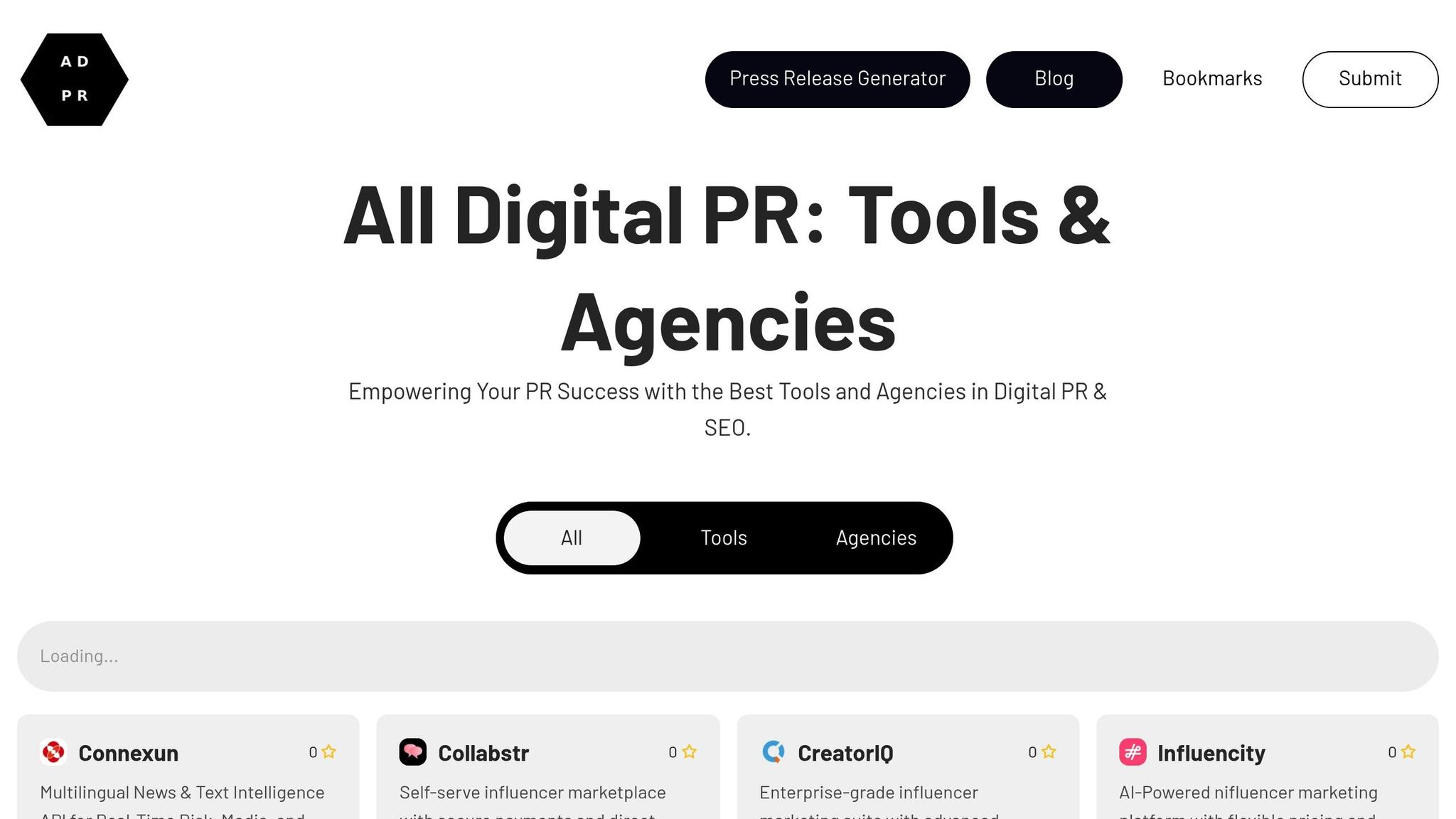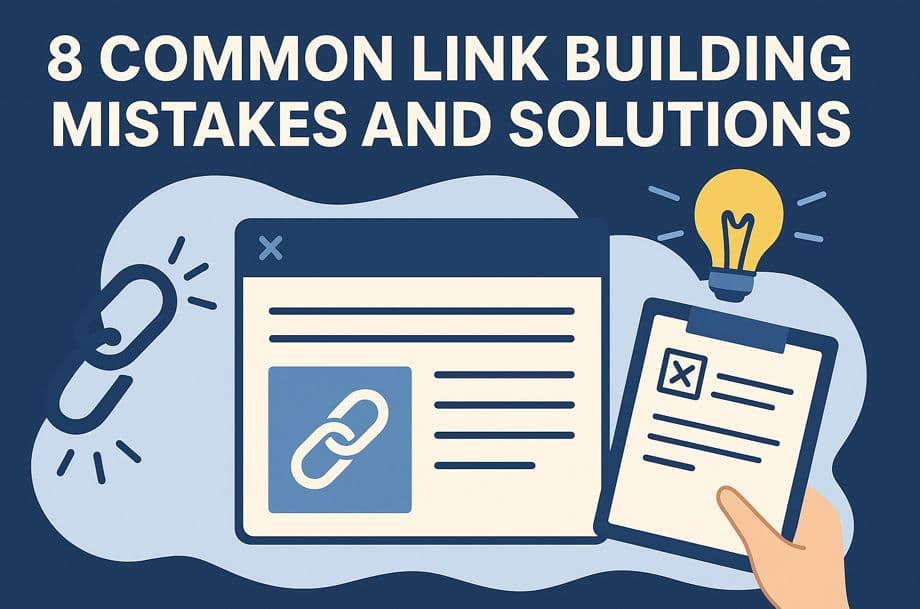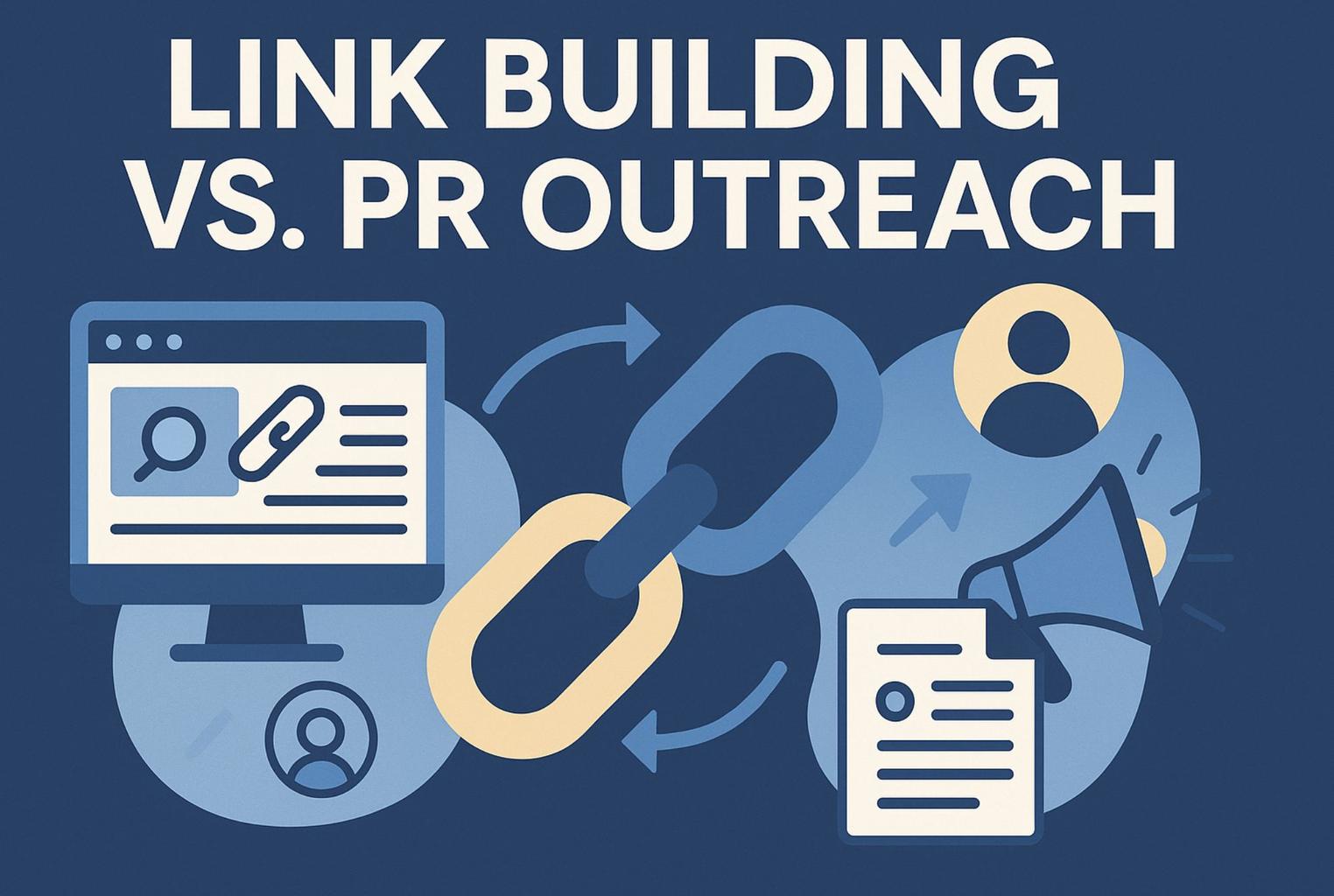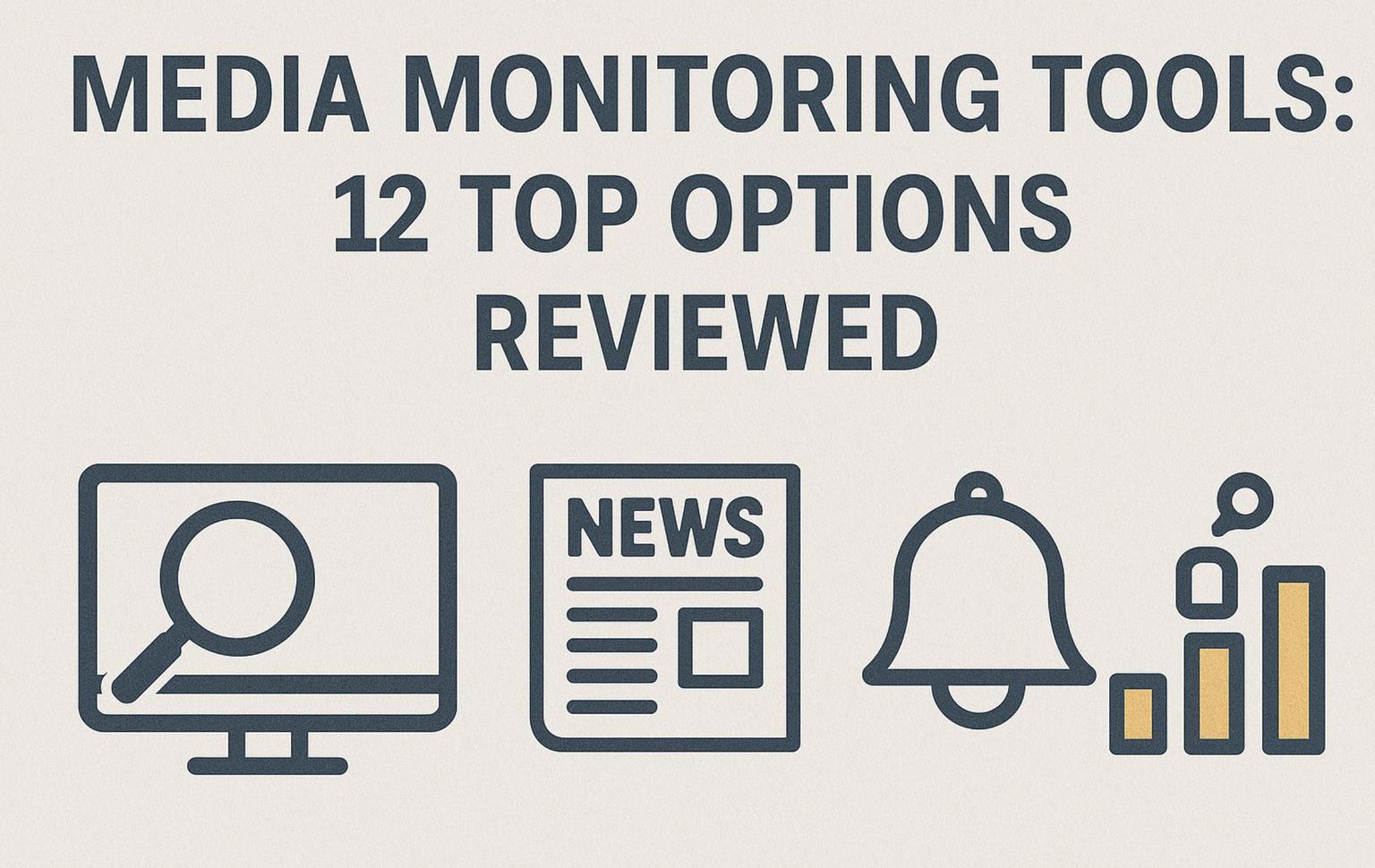Want to boost your website’s authority? Link building is still one of the most effective SEO strategies in 2025. But how much should you expect to spend? Here’s a quick breakdown:
- Per-Link Costs: $50–$200 for low-authority sites, $200–$500 for mid-range, and $500–$1,500+ for high-authority links.
- Monthly Retainers: $1,000–$25,000+ depending on the provider and scope.
- Project-Based Pricing: $3,000–$30,000 per campaign, tailored to specific goals.
Factors like link quality, industry competition, and provider type heavily influence costs. The U.S. market also emphasizes quality over quantity, with AI tools and digital PR playing a growing role. High-authority backlinks are expensive but can significantly impact rankings and ROI.
For most businesses, link building makes up around 40% of their SEO budget. Whether you choose per-link pricing, retainers, or project-based models, aligning your investment with your goals is key to success.
Types Of Backlinks And Actual Backlink Building Costs
Common Pricing Models for Link Building Services
In the U.S., link building services typically follow three main pricing structures, each tailored to meet different SEO needs.
Per-Link Pricing
With per-link pricing, you pay a set fee for each backlink secured. This model offers clear visibility into the cost per link.
The pricing depends on the quality of the link. For instance, backlinks from low domain authority (DA 20–30) websites typically cost between $50 and $200. Mid-range sites (DA 30–50) may charge $200 to $500, while high-authority sites (DA 50+) often command $500 to $1,500 or more per link.
This approach is predictable, making it easier to budget and scale your investment. However, it can become costly, especially when aiming for high-authority links. Quality can also vary widely among providers, so it’s essential to vet them thoroughly.
This pricing model works well for businesses with specific link-building goals or those trying out new providers. It’s also a good fit when targeting niche industries or regions where the higher price is justified.
On the other hand, monthly retainers provide ongoing support and a more strategic approach.
Monthly Retainer Models
Monthly retainers involve a recurring fee for continuous link-building efforts. Costs can vary significantly based on the scope and quality of work provided.
This model ensures stability for both the client and the provider. Agencies can allocate resources effectively, while clients benefit from consistent effort and attention. Over time, this approach often yields better results, as providers gain a deeper understanding of the client’s business, industry, and audience.
Retainers are particularly effective for building long-term domain authority through sustained link acquisition. They allow providers to pursue strategic opportunities, establish relationships with relevant publishers, and craft comprehensive content strategies that enhance link-building efforts.
However, retainers require a larger upfront commitment and fixed monthly costs. As Luke Dane, Founder & Director of Sprocket Digital, points out:
"I think long-term contracts mostly serve the agency as they can lock down recurring revenue for a set period, but the client is stuck regardless of the outcome, which puts them at a clear disadvantage. If a partnership is not going so well, it ultimately becomes a disadvantage for both parties."
This model is best suited for established businesses with steady marketing budgets aiming to build domain authority over time.
For businesses seeking more flexibility, project-based pricing might be the answer.
Project-Based Pricing
Project-based pricing involves a fixed fee for specific link-building campaigns. These campaigns might focus on launching a new product, targeting specific keywords, or building authority in a new market.
This model offers flexibility for both clients and providers. It allows quick adaptation to industry changes, experimentation with different strategies, and avoids long-term commitments. Projects have clearly defined start and end points, reducing concerns about scope creep.
Pricing is typically based on the time required, link targets, and desired outcomes. However, this approach can lead to cash flow uncertainty for ongoing SEO efforts and may be more expensive than retainers. Additionally, frequent evaluations and onboarding of new providers can be time-consuming.
| Pricing Model | ✅ Pros | ❎ Cons |
|---|---|---|
| Retainers | Reliable income and improved cash flow Long-term relationships |
Lack of flexibility when changing terms Harder to onboard new clients |
| Project-Based | Flexible to adapt to changes Clearly defined scope |
Cash flow uncertainty Lower client retention rates |
Many businesses find success by combining these models. For example, they might start with a project-based arrangement to test the waters, then transition to a retainer for sustained efforts while using per-link pricing for targeting high-value backlinks. This mix ensures flexibility while maximizing ROI.
Factors That Affect Link Building Costs
Understanding what drives link building costs is essential for managing your budget effectively. In the U.S., several factors influence pricing, including link quality, industry competition, and the type of provider you choose.
Main Variables That Impact Pricing
The quality of links is the biggest influence on cost. Websites with higher domain authority (DA) demand higher prices for link placements, as shown in the pricing tiers outlined earlier. This trend holds true no matter the service model.
Industry competition also plays a role. Competitive sectors often see higher costs because there are fewer high-quality linking opportunities available. As Nebojsa Jankovic, CEO of Heroic Rankings, explains:
"The authority of the website where the link is placed heavily influences cost. High-traffic, reputable sites typically charge more for link placement due to their greater reach and impact on SEO."
The type of provider you work with significantly affects pricing. Agencies tend to charge about 30% more than freelancers. Depending on the project’s scope, target keywords, and geographic focus, costs can range from $3,000 to $30,000 per campaign. Businesses running focused campaigns often spend between $5,000 and $20,000 monthly on link building.
Niche relevance is another factor. In specialized or highly regulated industries, there are fewer quality sites available, which means providers must invest more time and effort in prospecting and building relationships. This extra effort often increases costs.
These factors set the stage for how labor and content creation costs further shape overall pricing.
How U.S. Labor and Content Costs Affect Pricing
Labor costs in the U.S. are a major contributor to link building expenses. Experienced managers in major cities earn starting salaries of around $60,000 annually. Building an in-house team can cost approximately $177,000 per year, or about $15,341 per month.
Content creation is another key expense. U.S.-based writers typically charge $0.20 per word, so a 2,000-word guest post costs about $400. If you’re producing 10 posts a month, your content budget could easily reach $4,000.
The demand for native-English content that resonates with U.S. audiences also raises costs. SEO services in the U.S. are generally 3 to 5 times more expensive than those in emerging markets.
Geographic location adds another layer of variation. Link building services in cities like New York, San Francisco, and Los Angeles often charge higher rates due to increased operational costs and salary expectations.
As Alexandra Tachalova, CEO and Founder of Digital Olympus, notes:
"Link building is the biggest waste of money IF it doesn't help your brand stand out and create the right connections on the web that prove your site is a legitimate brand."
Cost Driver Comparison Summary
Here’s a breakdown of the main cost drivers for link building:
| Cost Factor | Details |
|---|---|
| Domain Authority | DA 20–30: $50–$200 per link; DA 30–50: $200–$500 per link; DA 50+: $500–$1,500+ per link |
| Provider Type | Freelancers: $50–$100 per hour; Agencies: ~$3,000–$15,000+ per month; Full-service agencies: ~$15,000–$30,000 per campaign |
| Geographic Location | U.S.-based services in major cities can cost 3–5× more than those from emerging markets |
While cost is an important consideration, focusing solely on price can be misleading. The cheapest option often fails to deliver the quality needed for impactful SEO, while the most expensive isn’t always the best. These factors should guide your budgeting and help you evaluate ROI more effectively.
sbb-itb-3230277
Pricing Tiers and Service Examples
As link-building methods continue to evolve, aligning your budget with your specific goals is more important than ever. By 2025, link-building services fall into three main pricing tiers, each offering a different level of service to help you make informed investment decisions.
Entry-Level Pricing
Entry-level services typically range from $100–$500 per link or $1,000–$2,500 per month for ongoing campaigns. At this price point, providers focus on basic outreach efforts, such as securing placements on lower-tier websites through guest posts or directory submissions. Service deliverables often include straightforward on-page SEO recommendations, simple monthly reports, and occasional technical or content-related suggestions.
Mid-Range Pricing
Mid-range services are priced between $500–$1,500 per link or $3,000–$10,000 per month for retainer-based plans. This tier offers placements on higher-authority sites with more niche relevance. Providers in this category typically deliver more robust solutions, including custom content creation, strategic link-building efforts, and technical SEO improvements that address multiple aspects of your SEO strategy. Studies show that mid-range link prices can vary from $150 to $1,500 per link.
Premium Pricing
Premium services start at $1,500+ per link or $10,000–$25,000+ per month for comprehensive campaigns. These services cater to businesses aiming for maximum impact and are willing to invest in top-tier placements. Offerings often include tailored strategies, integrated PR campaigns, advanced technical SEO, and proactive relationship-building with high-authority publishers. Premium providers also deliver detailed reporting and secure placements on leading websites. Some agencies charge over $5,000 for a single backlink from elite publications, while large-scale content marketing agencies might charge between $15,000 and $30,000 for full campaigns. Digital PR links in this tier generally cost around $1,250–$1,500 per link.
Data reveals that 53.9% of SEOs spend more than $300 for a single high-domain-authority backlink, with 23% spending between $400 and $600 per link, and 14.1% exceeding $600 per link. Most established link-building vendors charge between $500 and $1,250 per link, though premium placements can significantly increase costs. These higher investments often result in greater authority and stronger traffic growth for established businesses.
These pricing tiers provide a foundation for evaluating your ROI and planning your budget, which will be discussed in the next section.
How to Measure ROI and Set Your Budget
Figuring out the return on investment (ROI) for your link-building efforts is essential when planning your SEO budget. Link building can take up a large portion of your SEO spending. Knowing how to calculate ROI and set realistic budgets can help you avoid wasting resources and focus on strategies that drive growth.
How to Measure Return on Investment (ROI)
To measure ROI effectively, you need to track metrics that connect your spending to actual business outcomes. The basic formula is: (Revenue - Cost) / Cost. While it’s not always easy to attribute revenue directly to link building, there are key indicators to watch.
Metrics like improved keyword rankings, organic search traffic growth, and referral traffic are good starting points. For example, pages in the #1 search position have an average of 3.8 times more backlinks than those ranked #2–10. Moving up to the #3 spot can increase click-through rates (CTR) by 10%, and jumping from #3 to #1 could boost CTR by another 30%.
By using tools like Ahrefs or Semrush, you can estimate factors such as monthly search volume, CTR, conversion rates, and lead value. Let’s break it down with an example: if a page earns $60,000 annually and you spend $10,000 on link building, the ROI would be ($60,000 - $10,000) / $10,000 = 5.0, or 500%. Another scenario: an online store with 100,000 monthly sessions generates $10,000 in revenue ($0.10 per session). A 10% traffic boost from link building increases annual revenue from $120,000 to $132,000. If link-building costs $5,000, the ROI would be 140%.
"Calculating ROI is not about how many links your competitors have – it's about how many valuable links they have."
ROI varies significantly by industry. Real estate sees SEO ROI as high as 1,389%, while financial services reach 1,031%. SEO leads also convert at a rate of 14.6%, compared to just 1.7% for outbound efforts. Most businesses see positive ROI within 6 to 12 months, with SEO delivering an 8x return compared to PPC’s 4x.
Understanding your ROI provides a clear framework for determining how much you can afford to invest.
How to Set a Realistic Budget
Once you’ve calculated your ROI, align your budget with your business goals and market position. For small businesses focused on local SEO, monthly budgets typically range from $500 to $3,000. Mid-sized companies targeting national or eCommerce SEO often spend $3,000 to $15,000 per month, while large enterprises in competitive industries may need $10,000 to $50,000 or more.
On average, a paid backlink costs $361.44, and dedicated link-building campaigns usually require budgets between $5,000 and $20,000 per month. Depending on the campaign size:
- Small campaigns: $1,500–$3,000/month
- Medium campaigns: $3,000–$5,000/month
- Enterprise campaigns: $5,000+/month
When setting your budget, factor in your business size, SEO objectives, and pricing model. For instance, achieving local visibility costs much less than competing for top national rankings. Additionally, the type of links you pursue can impact costs - higher-authority links tend to be more expensive.
The costs also vary by approach. Building an in-house link-building team costs around $15,341 per month, while agencies charge $240 to $700 per link. Interestingly, hiring an SEO agency can be up to 10 times cheaper than maintaining an in-house team, making it a cost-effective choice for many businesses.
Using AllDigitalPR Directory for Provider Comparisons

Selecting the right provider can be tricky, especially with so many pricing models and service options out there. That’s where the AllDigitalPR Directory comes in. This platform simplifies your search by offering a centralized place to compare link-building agencies, SEO services, and digital PR tools.
The directory allows you to filter providers based on budget, service type, and specialization, making it easier to find agencies that fit your needs. You can review pricing details, service offerings, and expertise before reaching out.
Key benefits of using the AllDigitalPR Directory include:
- Access to verified provider information
- Transparent pricing (where available)
- Side-by-side comparisons of multiple agencies
This tool saves you time during the research phase and ensures you’re considering providers that align with your budget and goals. It also highlights agencies with industry-specific expertise or specialized link-building techniques, helping you make informed decisions.
Key Takeaways
Here’s a quick recap of the most important insights for maximizing your link building efforts in 2025. The key to success lies in striking the right balance between costs and measurable results, especially since organic search accounts for 53% of website traffic.
Main Points Summary
To make the most of your link building strategy, it’s important to understand how pricing works. Costs per link can range from around $250 for lower-authority placements to over $1,250 for high-authority ones. Monthly retainers often provide scope-based pricing, while project-based models offer flexibility tailored to specific goals.
But link building costs go beyond just acquiring links. Typically, it makes up about 40% of an SEO budget, with factors like domain authority, content needs, industry competition, and labor costs influencing the final price tag.
When done right, the return on investment (ROI) makes these costs worthwhile. Organic SEO delivers better ROI than PPC, with leads from organic search far outperforming outbound methods. For example, real estate businesses can see an ROI of up to 1,389%, while financial services can reach 1,031%. Most companies notice positive returns within 6 to 12 months, with peak benefits occurring in the second and third years.
"When your link strategy supports your business goals, it becomes a growth tool rather than just another SEO checkbox." – Travis Bliffen, CEO, Stellar SEO
To measure success, focus on metrics like organic traffic growth, keyword ranking improvements, and domain authority increases. Tools like Google Analytics, Ahrefs, and SEMrush can help you turn your link building investment into real, measurable business outcomes.
Final Budget Planning Tips
Match your budget to your business size and goals. Consider your industry’s potential for conversions when deciding how much to spend. Survey results show that SEO generates the most leads for 60% of B2B SaaS marketers and delivers the best ROI for 49%.
When choosing a provider, the AllDigitalPR Directory can simplify the process. This platform lets you compare link building agencies, pricing models, and services, helping you find options that fit your budget and industry needs. Its filters make it easy to evaluate verified agencies side-by-side, so you can make informed decisions and maximize your investment.
FAQs
How can I choose the best link-building pricing model for my business?
Choosing the right link-building pricing model comes down to your specific goals, budget, and the outcomes you're aiming for. For instance, a hybrid approach - blending manual outreach with organic strategies - typically costs between $3,000 and $7,000. This option strikes a balance between maintaining quality and keeping costs reasonable. Alternatively, pay-per-link models range from $50 to over $1,000 per link, with the price largely depending on the authority and relevance of the site providing the link.
To determine the best fit for your needs, think about factors like your target ROI, the number and quality of links you require, and how much you're prepared to invest. Aligning these considerations with your broader digital marketing plan will set you up to make a well-informed decision tailored to your business.
What should I look at to measure the ROI of my link-building investment?
To gauge the return on investment (ROI) of your link-building efforts in 2025, keep an eye on several critical metrics: organic traffic growth, keyword ranking improvements, conversion rates, and domain authority. These metrics provide a clear picture of how well your strategy is performing and the value it brings to your overall goals.
It's also important to emphasize quality over quantity when analyzing backlinks. Focus on the authority and relevance of the sites linking to yours. A handful of high-quality, trusted backlinks can have a much bigger impact than a large volume of low-value links. By carefully reviewing these elements, you'll gain valuable insights into how your link-building approach supports your broader marketing objectives, helping you make smarter decisions for future campaigns.
How can I check the quality of backlinks from SEO link-building services?
To assess the quality of backlinks from link-building services, start by examining the authority and relevance of the websites linking to your site. Prioritize backlinks from trusted, high-authority domains that are closely related to your industry or niche. These types of links are more likely to improve your SEO rankings. Steer clear of links from spammy or unrelated sites, as they can harm your search engine performance.
Leverage SEO tools to verify the legitimacy and quality of your backlinks, ensuring they originate from reputable sources. It's also a good idea to request detailed reports from your service provider that list the exact websites where your links have been placed. This level of transparency not only confirms the value of the service but also helps maintain a natural and strong link profile.


